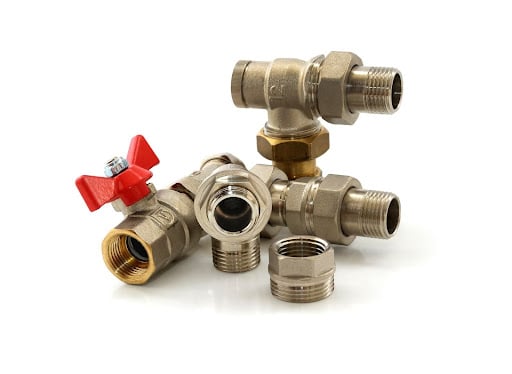Ever stared at plumbing parts in a hardware store and wondered, What in the world does FIP mean? You’re not alone. Whether you’re installing a new faucet, hooking up a water heater, or just trying to fix a leak, knowing the right plumbing fitting terminology can save you time, money, and frustration.
Let’s break it down in easy language, without the technical mumbo jumbo.
What Is FIP in Plumbing?
FIP stands for Female Iron Pipe. That means the fitting has threads on the inside, like a socket, that accepts an MIP, or Male Iron Pipe, which has threads on the outside.
Despite the word “iron” in the name, FIP fittings aren’t limited to iron. They can be made of brass, PVC, or steel. It’s more about the shape and threading than the material.
If you’ve got a fitting that screws over a pipe, you’re probably dealing with an FIP. These fittings are used to connect things like faucets, appliances, and valves to the plumbing system. You’ll usually spot them in places like behind your washing machine or under your sink.
FIP vs. MIP Plumbing: What's the Difference?
Here’s a quick and simple comparison:
Type | Threads | Connects To | Used For |
FIP (Female Iron Pipe) | Inside (internal) | MIP | Valves, appliances, faucets |
MIP (Male Iron Pipe) | Outside (external) | FIP | Water lines, pipe connections |
So, in everyday situations:
- The water line has an MIP fitting that threads into the FIP end on your faucet.
- A shut-off valve might have an FIP that receives the MIP pipe.
It’s kind of like putting a plug into an outlet. MIP is the plug; FIP is the outlet.
Why It Matters: Pipe Fitting Terminology That Makes a Difference
Understanding plumbing fitting definitions isn’t just for professionals. It matters for DIYers and homeowners too.
Here’s why:
- Avoids Costly Mistakes: Buy the wrong fitting and you might end up with a leaky connection or a wasted trip back to the store.
- Speeds Up Repairs: When you know the part you need, you're in and out of the store faster and back home fixing things.
- Saves You Money: Getting it right the first time means fewer returns, fewer tools, and fewer calls to emergency plumbers.
A Quick Lesson in Plumbing Thread Types
When you’re dealing with FIP and MIP, you’re working with NPT threads, which stand for National Pipe Thread. NPT threads are tapered; they get tighter as you screw them together. That creates a seal that helps prevent leaks.
Some other terms you might run into:
- FPT (Female Pipe Thread) is the same as FIP.
- MPT (Male Pipe Thread) same idea as MIP.
- NPT is the thread standard used for most fittings in the U.S.
FIP and MIP are common in plumbing, while FPT and MPT might show up in technical specifications or when you’re working with non-metal materials like PVC.
Real-Life Example: Why FIP vs. MIP Can Save the Day
Let’s say you’re replacing your washing machine hose. You unscrew the old hose and go to the store for a new one. The label says it connects to an FIP fitting.
If you don’t realize that means the threads are on the inside, you might accidentally buy another FIP hose end, two female ends that won’t connect. No water flows. You’re stuck. Back to the store you go.
Knowing you needed a MIP hose to connect to that FIP inlet would have saved time and gas.
Do You Need Thread Sealant with FIP?
Yes, you usually do. Since FIP and MIP use NPT threads (which are tapered), adding a little Teflon tape or thread sealant helps ensure a tight, leak-free seal.
Wrap the MIP threads (never the FIP), screw the pieces together, tighten by hand, then give it an extra twist or two with a wrench. Don’t overdo it, though you don’t want to crack anything.
Common Places You’ll See FIP Fittings in Texas Homes
In Texas homes, especially with outdoor setups, water softeners, and hard water systems, FIP fittings show up more than you might think.
- Outdoor faucets and hoses
- Water heater connections
- Irrigation systems
- Kitchen and bathroom sink valves
- Dishwasher and laundry hookups
Knowing what to expect helps whether you’re buying parts or calling for repairs.
When It’s Time to Call a Pro
If you’re replacing a hose or upgrading a faucet, you might feel confident doing it yourself. But if your repair involves:
- Gas lines
- High-pressure pipes
- Water heater hookups
- Leaks inside the wall
That’s when you want a licensed plumber. The difference between a snug seal and a major water bill is experience and the right fittings.
Final Thoughts: What Is FIP in Plumbing, and Why Should You Care?
By now, you’ve got a pretty solid handle on FIP, meaning plumbing. It’s not just a random abbreviation; it tells you what kind of fitting you’re dealing with, how it connects, and what to look for when doing repairs or upgrades.
To recap:
- FIP = Female Iron Pipe = internal threads
- MIP = Male Iron Pipe = external threads
- They screw together following the NPT standard
- Add thread tape or sealant for a leak-free seal
- Double-check your parts before you buy or install
Need Help with Fittings? Let OnPoint Plumber Handle It
Plumbing projects don’t have to be stressful, especially when you’ve got local pros ready to step in. At OnPoint Plumber, we’ve helped homeowners all across Texas get clean, leak-free connections using the right fittings, the first time. Whether you’re replacing a fixture, planning a remodel, or just not sure what kind of pipe thread you’re staring at, we’re here with quick answers, honest pricing, and work that holds up.
Contact us now and let us take the guesswork (and the extra hardware store trips) out of your day. Your pipes will thank you.
Frequently Asked Questions
Can FIP and MIP be used interchangeably?
Not exactly. They’re meant to fit together, not replace each other. FIP connects to MIP, but you can’t connect two FIPs or two MIPs without an adapter.
Do I need thread sealant for FIP connections?
Yes. Use Teflon tape or pipe dope on the male threads before tightening the connection. This helps prevent leaks.
Is FIP the same as NPT?
FIP uses NPT threads, but NPT refers to the thread style (tapered), while FIP refers to the gender (female/internal threads).
Where are FIP fittings most commonly used?
You’ll see FIP on appliances like dishwashers and washing machines, sink valves, hose bibs, and outdoor plumbing connections.
What if I accidentally buy the wrong fitting?
If you get two parts with the same threading (like FIP and FIP), they won’t screw together. You’ll need to exchange one or get an adapter.

